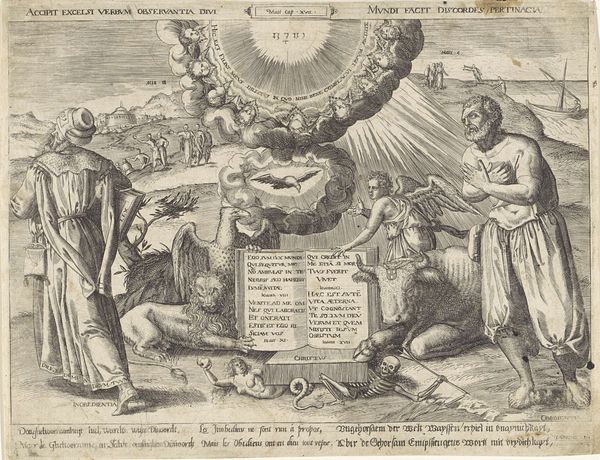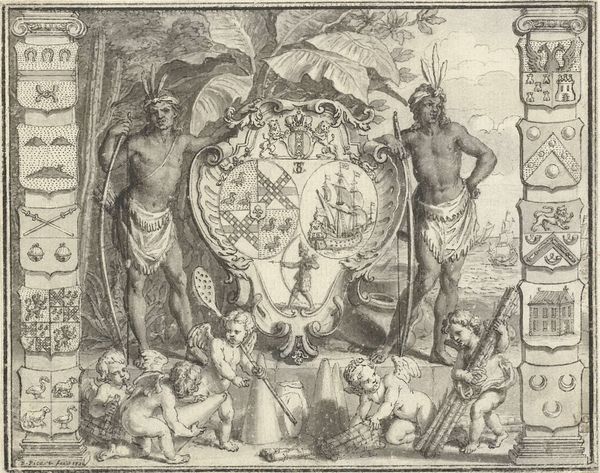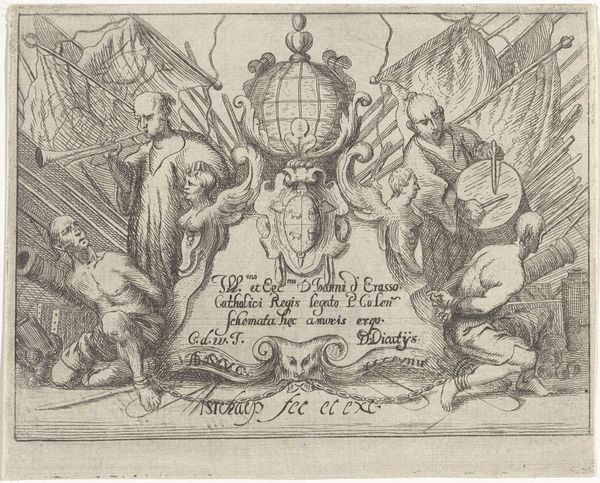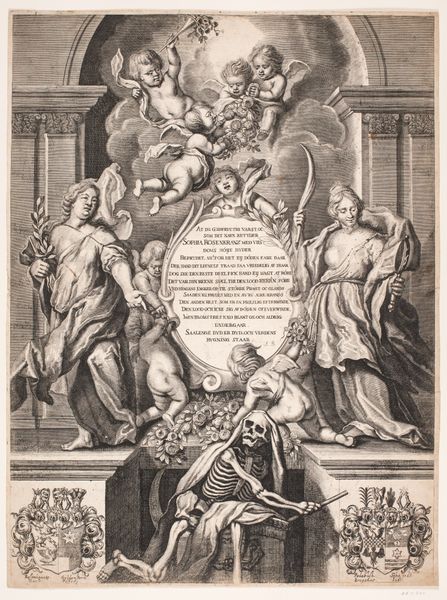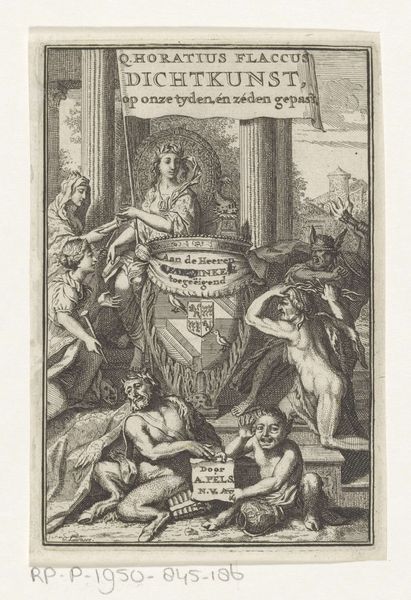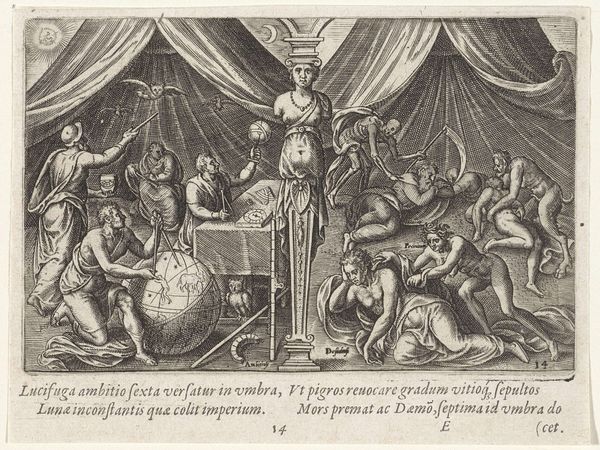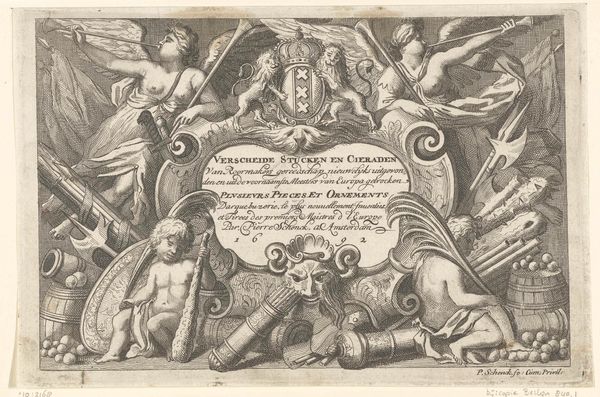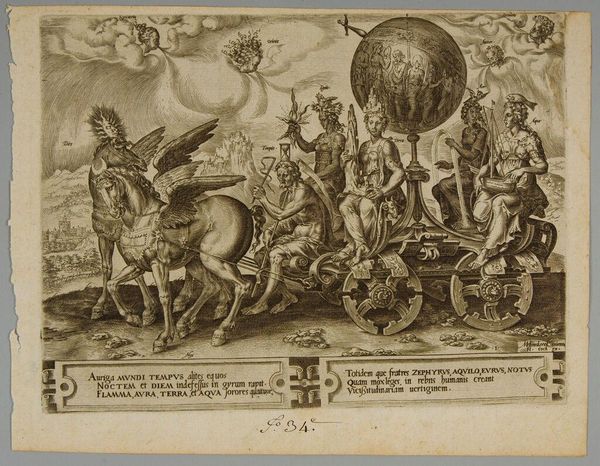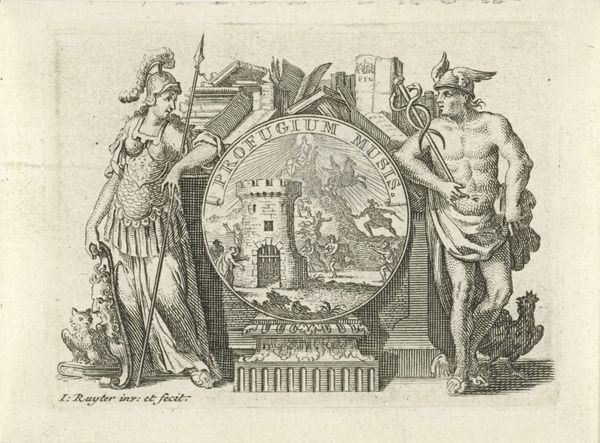
print, engraving
#
allegory
#
baroque
# print
#
figuration
#
history-painting
#
engraving
Dimensions: height 92 mm, width 137 mm
Copyright: Rijks Museum: Open Domain
Curator: This engraving, dating roughly from 1613 to 1667, is titled "Blindfolded Fortune Distributing Coins." What’s your initial take on it? Editor: Darkly satirical, I’d say. Look at the grasping figures surrounding the globe—the eagerness is almost grotesque, especially in the fine linework of the engraving. Curator: Precisely! The technique, specifically engraving, enables the artist, thought to be anonymous, to produce these densely packed figures and detailed textures which are absolutely vital in conveying the print's allegory of Fortune's indiscriminate, even blind, bestowal of wealth. The precision and replicability inherent to engraving facilitated wider distribution, shaping public perceptions on wealth and its distribution during the period. Editor: And, considering the period, this resonates strongly with the social upheavals and the emerging merchant class of the 17th century. The print reads almost like a visual commentary on the chaotic redistribution of power and wealth within society—a critique, perhaps, of unchecked capitalism. Curator: Indeed. See how the figures strain to reach Fortune, some supporting the very globe she sits upon, highlighting the labor involved. Their clothing, too, reflects the varied classes vying for Fortune’s favor, suggesting this pursuit transcends social boundaries. Editor: It's also impossible to ignore how a blindfolded Fortune is perched on a map of the world, casually tossing coins. There’s a powerful statement here about the capriciousness of fate. A statement amplified when seen and considered within the broader context of Early Modern Europe when mercantilism reshaped political and cultural institutions. Curator: And let’s not forget that beautifully rendered globe. It signifies not just the world, but the expanding networks of trade and commerce driving this very scramble for riches. The map literally provides the foundation upon which this allegory is built. Editor: The engraving technique further serves the allegorical and historical elements through distribution to various segments of society during periods of societal flux and class struggles. Curator: I agree; this piece offers a fascinating glimpse into the socio-economic tensions of its time. Its production and consumption, as an engraving, allowed its message to spread widely, cementing its impact. Editor: Ultimately, it's a potent piece that asks us to reflect on how chance, social structures, and human desire intersect to shape our world, now as much as then.
Comments
No comments
Be the first to comment and join the conversation on the ultimate creative platform.
